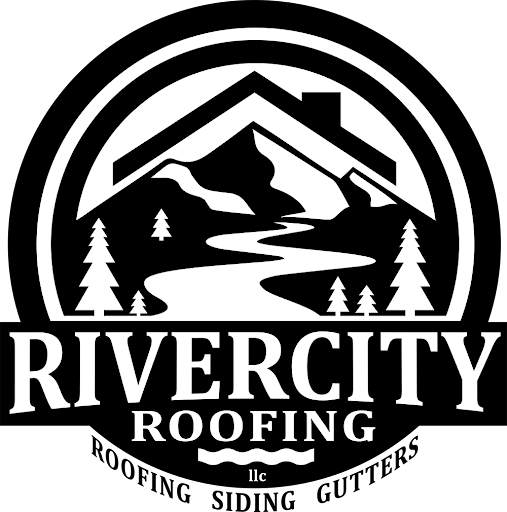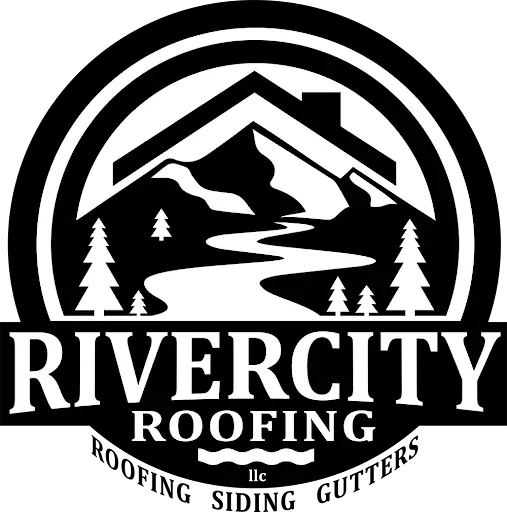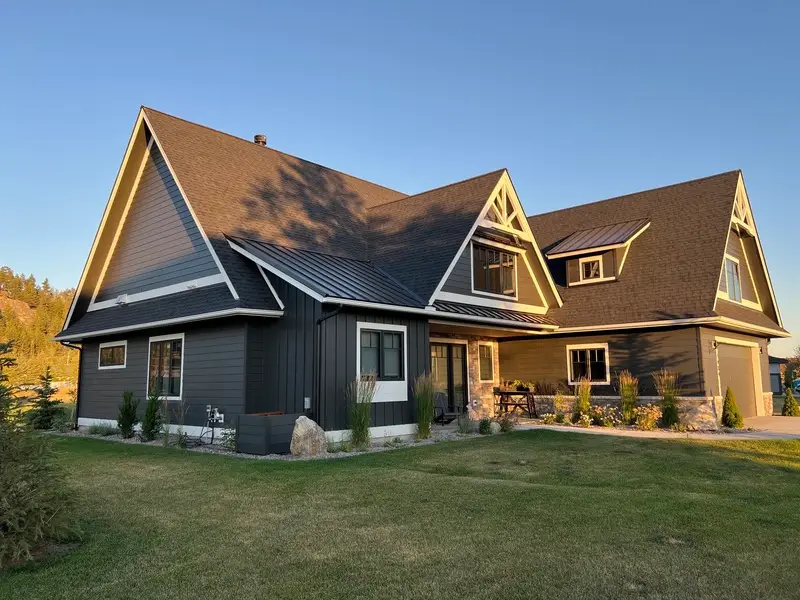Restorations to roofs have remained one of the frequently-neglected points of home improvement, yielding significant utility savings. Besides providing an aesthetic view and protection, a new roof offers great possibilities to enhance the energy efficiency of your house, which reduces your electric bill and diminishes environmental impact.
This article goes ahead to discuss how to save on utilities with a new roof, how to enhance energy efficiency, and how energy-efficient roof materials can change the game completely.
Will a New Roof Lower Your Electric Bill?
When it comes to saving money on electric bills, most homeowners tend to consider investing in new appliances and insulating the house. However, the roof has a very important function as far as temperature control within the given home is concerned. A new roof can save energy costs because a newly constructed roof, especially an energy-efficient one, will reduce energy used in cooling and heating.
Free Roof Inspections. Fast. Reliable.
Is your roof ready to weather the storm? Dont risk property damage. Our free roof inspections provide expert analysis to identify potential issues before they become costly problems.
How Roofs Affect Heating and Cooling
Your roof is one of the main protective barriers that separate your home from the outside environment. It absorbs sunlight during the day and holds heat, causing an increase in indoor temperatures, especially in warm regions. Therefore, in warmer places, the air conditioning systems have to work harder to cool the interiors. In colder climates, an inefficient roof will cost more in terms of heating costs because it allows heat to escape.
It is, however, important to note that aged roofs, especially those developed out of obsolete building materials or low-quality insulating systems, compound these problems. In addition, when you are installing a new roof, it is not only the old materials that are changed, but new, better, and more efficient technologies for warming or cooling the house may be installed. This can translate to less need to use your heating and cooling systems, which in turn translates to low electric bills.
How Much Can You Save?
How much you stand to gain in saving your electric costs after putting up a new roof depends on aspects such as the roofing type, the house size, climate, and the energy efficiency of the previous roof. According to research, homeowners can save between 10% and 20% on electricity bills if they install a better and modern roof. Quite often, the cost difference can be even greater, especially if the building is located in regions with severe climatic conditions.
Does a New Roof Help Energy Efficiency?
The Roof’s Role in Energy Efficiency
Roofs have the very important task of providing your home with energy efficiency. Heat has a tendency to rise up, so in the cold months, a large heat produced within your home escapes through the roof if it is not well insulated. During summer, an inefficient roof acts as a conductor by allowing excessive heat into the house and putting pressure on your air conditioning system.
A new roof improves energy efficiency by addressing several key areas:
Insulation: Today, there are many roofing options that have insulation as a part of the system, making your home warmer in winter and cooler in summer. Better insulation minimizes heat loss through the roof, so there is no need for continuous use of heating devices during the biting cold climate.
Ventilation: Fresh air and cross ventilation are key factors to an energy-efficient home. This is particularly so if the attic is inadequately ventilated, as this leads to hot air becoming trapped within the attic, which puts pressure on your HVAC system. A new roof with enhanced ventilation assists in the clearing of hot air and minimizes the burden on the air conditioning system.
Reflectivity: Some of the modern roof materials available in the market provide better insulation properties as compared to other traditional types of roofing. This is especially so in hot climates because roofing materials that reflect well will keep your homes cooler.
Long-Term Energy Efficiency Benefits
Replacing a roof is a big investment and an expensive one, but it pays off in the long run because not only does it significantly reduce one’s electricity bill, but it also delivers long-term benefits. If properly installed with other modern methods of roof insulation and ventilation, a roof tends to survive for decades and continues providing energy conservation. Most of the roofing materials adopted in energy-efficient roofing, for example, metal or clay tiles, have longer life expectancy than other conventional roofing materials, thereby requiring minimal repairs or replacements.
Energy-Efficient Roof Materials
The type of material to use is probably one of the biggest choices that a homeowner has to make when opting for a new roof. All types do not fall into the same category in terms of energy.
Here are some of the most energy-efficient roofing materials available:
Cool Roofs
Cool roofs are primarily designed to reflect more sunlight and absorb less heat than conventional roofs. They are painted with a reflective material that tends to enhance the albedo (reflective index) of the roof. These roofs are more advantageous where and when temperatures are high and when costs of cooling also are higher, especially during the summer months. Cool roofs can be made of anything ranging from reflective paint to tiles or shingles, depending on the builder’s preference.
Metal Roofing
Metal roofing is one of the most important materials used in today’s efficient house construction. In addition to the enhancement of the material’s strength and durability, metal also has inherent core-reflector characteristics that assist in decreasing heat absorption. Metal roofs can help you save as much as 25% on the amount spent on cooling. They are coated with reflective pigments so as to increase their reflective surface and are, therefore, suitable for areas with high temperatures. Also, metal roofing materials are reusable, making them environmentally friendly.
Clay and Concrete Tiles
Clay and concrete tiles are popular due to their long-lasting life and inherent insulating performance. These materials are most efficient at controlling indoor temperatures, reducing the temperature inside homes during the summer months, and insulating homes during the cold winter months. Despite their costs being higher than the costs of other roofing materials, the durability and energy efficiency of these roofing materials make them better investments and help save utility bills.
Asphalt Shingles with Reflective Coating
Despite the fact that asphalt shingles are a popular, widely used, and relatively inexpensive roofing option, they are not considered eco-friendly. However, modern asphalt shingles are coated with a special material that reflects sunlight and allows for less heat absorption. These types of reflective shingles can go a long way towards minimizing the expenditures that are incurred on cooling during extremely hot weather.
Green Roofs
A green roof or living roof includes plant life growing on the roof surface. Green roofs serve as insulating layers, which helps to minimize the amount of heat that radiates into a house during the summer and the amount of heat that escapes during the winter. It also contributes to mitigating phenomena like urban heat islands and increasing air quality and biodiversity. Although it is more expensive and demanding in terms of maintenance compared to conventional roofs, the annual savings in energy costs and the environmental positive effect are significant.
Additional Energy-Saving Tips with a New Roof
To further boost energy savings, homeowners can combine a new roof with other energy-efficient features:
Solar Panels: Solar panels placed on rooftops can significantly decrease the dependency on traditional electricity sources, thereby saving on utilities.
Insulation Upgrades: You can also add more insulation in your attic when installing a new roof to make your home more energy efficient.
Smart Ventilation Systems: Today, there are many different ways to ventilate your house; installing some new vents on your roof can eliminate the strain on your HVAC.
Return on Investment for Energy-Efficient Roofs
Although the initial cost of installing an energy-efficient roof is higher than the traditional one, these costs are compensated for by the difference in utility bills. In the time span of 20 to 30 years of living in a house, one can save thousands of money in the cost of heating and cooling. Also, in terms of gains, improved energy efficiency in roofs can help enhance the market value of your home, offering a good return on investment.
Conclusion
Therefore, a new roof is among the most useful investments that will help to save money on utilities and increase the energy efficiency of your house. Regardless of whether you get a cool roof, metal roofing, or any other efficient material, the advantages are numerous. In addition to reducing the cost of electricity and increasing the insulation and ventilation – a new roof can indeed pay for itself while enhancing your living comfort and environment.
Save on Utilities with a New Roof – Contact River City Roofing Today!
Want to save on utility bills? The difference can be made with a new energy-efficient roof from River City Roofing; our expert team will help you select the best roofing materials that will enhance your home’s energy efficiency potential, thus costing you less on your utility bill.
Don’t wait – take the first step towards getting a more energy-efficient home today. Call River City Roofing for your free consultation! Just wait and let us show you how a new roof will cut your costs while keeping your home cool in the summer and warm in the winter.



